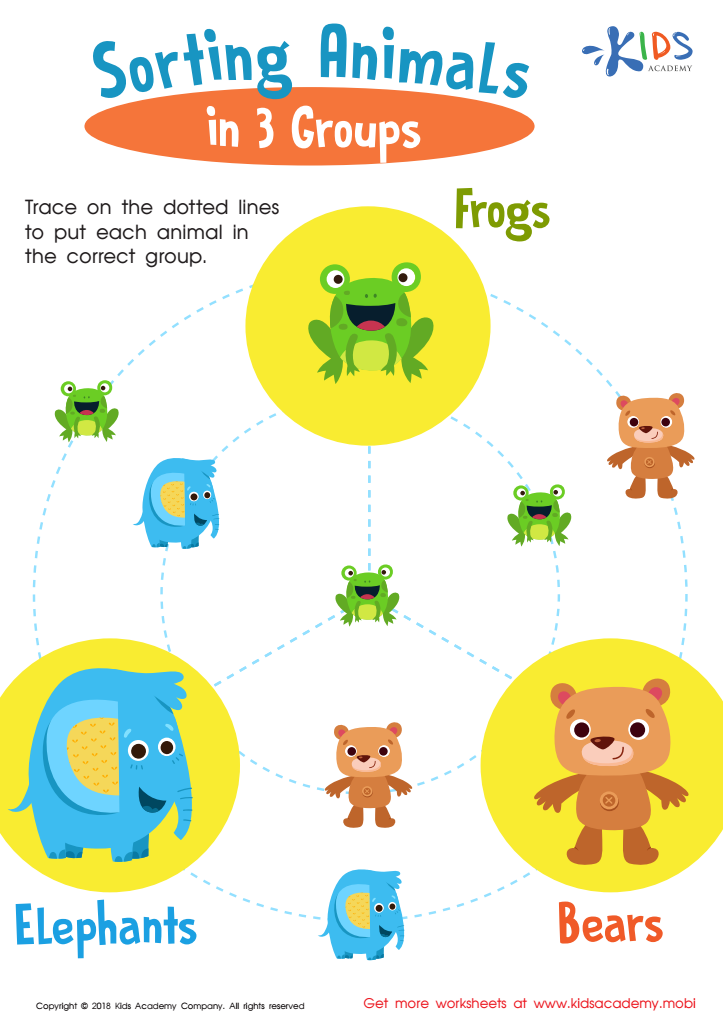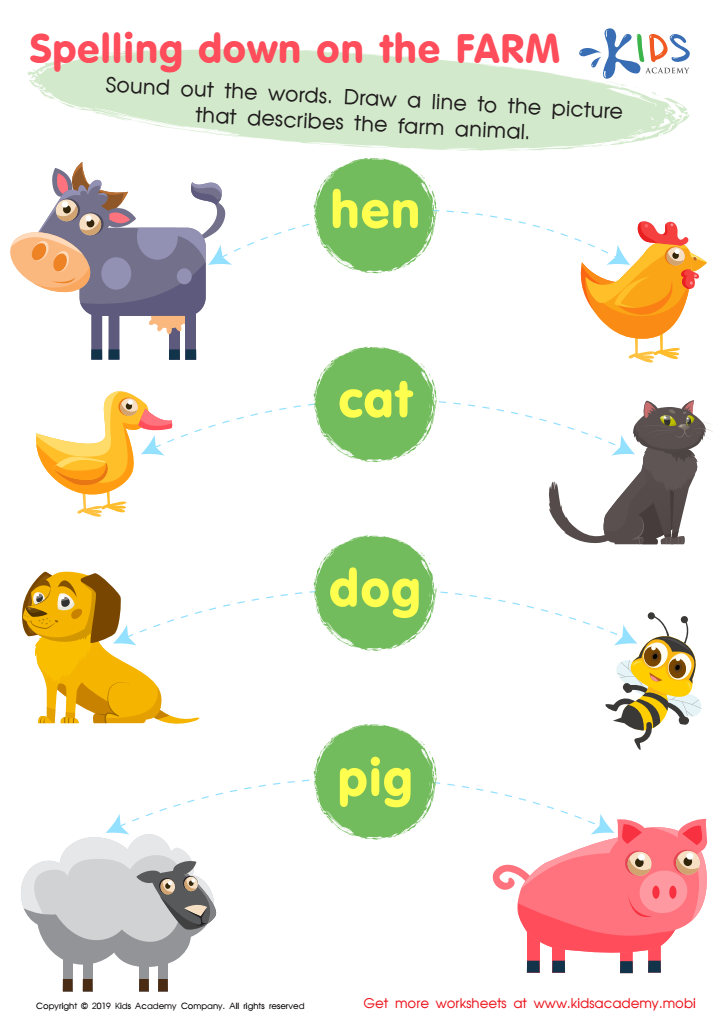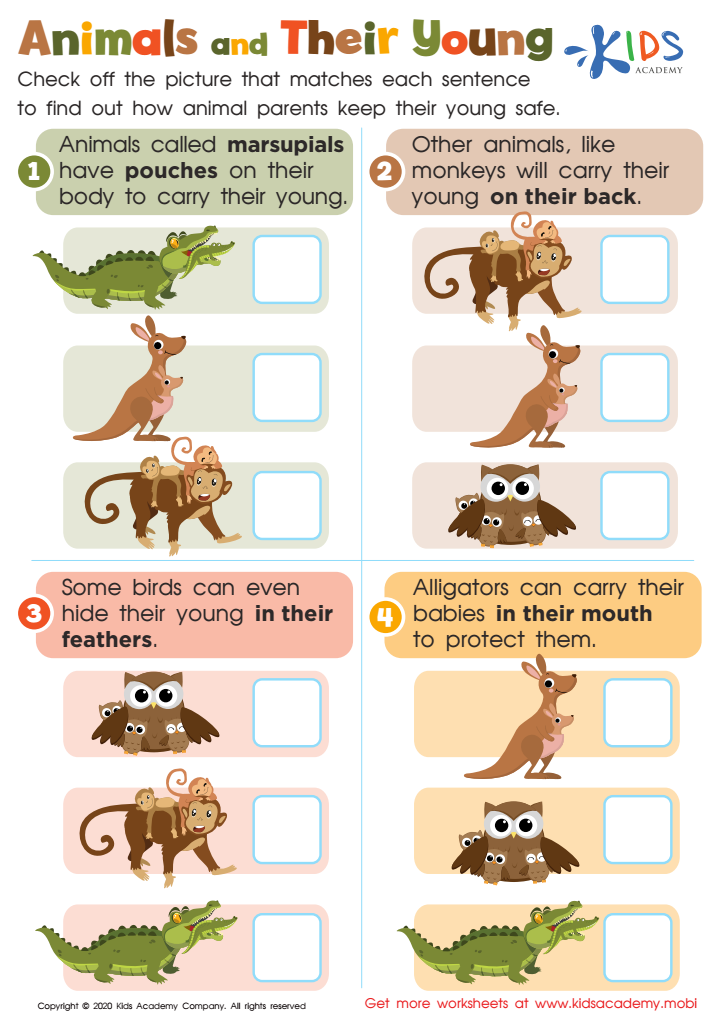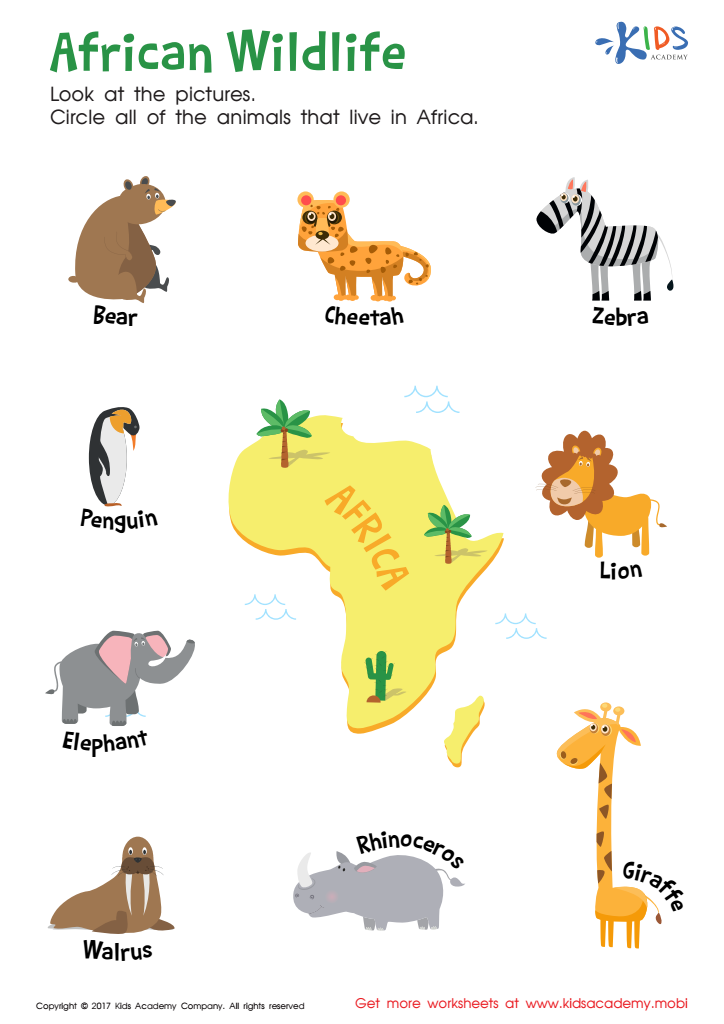Animal recognition Normal Plants and Animals Worksheets for Ages 4-8
4 filtered results
-
From - To
Discover a world of insightful fun with our "Animal Recognition Normal Plants and Animals Worksheets" designed for ages 4-8! Perfect for young learners, these engaging activities help kids identify and differentiate between various animals and plants. Our meticulously crafted worksheets enhance cognitive skills through the colorful, interactive exploration of the natural world. Young scholars will enjoy learning essential scientific concepts while developing critical thinking and observation skills. Ideal for both classroom and homeschool settings, these printable worksheets offer a fantastic way to introduce children to biology in a fun and educational manner. Unlock the wonder of nature today!


Sorting Animals in 3 Groups Worksheet


Spelling Down on the Farm Worksheet


Animals and Their Young Worksheet
Animal recognition and learning about normal plants and animals are crucial for children aged 4-8 because they lay the foundation for a child's understanding of the natural world, fostering a sense of curiosity, empathy, and responsibility. At this developmental stage, children are highly curious and absorb information like sponges. Introducing them to different animals and plants helps build their vocabulary, enriches their language skills, and aids cognitive development. Recognizing common animals and plants also provides real-life context to concepts like habitats, life cycles, and ecosystems, which are vital science fundamentals.
Moreover, this knowledge instills compassion and empathy in children. As they learn about different species, their varying needs, and their roles in the ecosystem, children begin to appreciate and respect the natural world. This often translates to more compassionate behaviors towards animals and awareness of environmental conservation from a young age.
Integrating animal and plant recognition into early education encourages children to spend more time outdoors, which promotes physical well-being and counters the effects of excessive screen time. Additionally, hands-on learning experiences, such as nature walks and small gardening projects, can enhance motor skills and provide sensory-rich experiences.
In summary, animal and plant recognition are essential for early childhood, not only for intellectual growth but also for nurturing a well-rounded, empathetic, and environmentally conscious individual.
 Assign to My Students
Assign to My Students















